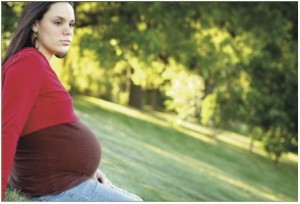
After the age of 30, the creation of new bone cannot keep up with the rate of bone loss in your body. The estrogen depletion that comes with menopause results in an increased risk for low bone mineral density, osteopenia and osteoporosis. For 5-10 years after menopause, this bone density loss accelerates into a gradual weakening of your bones and can lead to an increase in the risk for fractures and other injuries.
Physicians and organizations left and right have tried to specify a regimen to help slow down the weakening of bones in postmenopausal women. The National Osteoporosis Foundation states that both types of hormone therapy, Estrogen therapy and combined Estrogen and Progesterone therapy, reduce the risk of osteoporosis. But what about supplements?
This past February, the US Preventive Services Tasks Force (USPSTF) stated there was insufficient evidence regarding calcium and vitamin D supplementation for bone fracture prevention in postmenopausal women. Now, a new analysis shows the evidence that may very well alter this recommendation.
The North American Menopause Society conducted a trial with 27,347 postmenopausal women, of which 8,000 took supplemental calcium (1,000 mg) and vitamin D (400 mg) daily, and 8,000 took look-alike placebos. These women came from all the hormone groups in the study: on HRT combinations, those on HRT estrogen alone, and the rest on hormone look-alike placebos.
Researchers then studied the hip fracture incidents among women who took hormones and supplements, women who took hormones alone, and women who took neither one. Of the women on both hormones and supplements, there were 11 hip fractures per 10,000 women per year. Of the women solely on hormones, there were 18 hip fractures per 10,000 women per year. And of the women who took neither, there were 22 hip fractures per 10,000 women per year.
Although the researchers could not specify how much of calcium and vitamin D should be taken, they concluded that postmenopausal women taking hormone therapy should also take supplemental calcium and vitamin D to reduce the rate of bone loss. The benefits of calcium and vitamin D seem to increase with increasing total intake, but also depend on the side effects of too much calcium, such as constipation.
So consider taking calcium and vitamin D supplements in combination with your hormone therapy, but don't stop drinking your milk! Continue trying to meet your daily calcium needs with your diet. Furthermore, did you know that weight bearing exercise can also improve your bone health? To learn more about how you can manage your bone health and overall health in menopause, visit http://menopausenu.org/

 New research is surfacing that links anesthesia to inhibited cognitive developments in children under four. Significant brain development occurs in young children at this time, and ketamine—a common anesthetic—has been shown to affect the brain’s learning ability. Studies began back in 2003 when Merle Paule, Ph.D., director of the Division of Neurotoxicology at the FDA’s National Center for Toxicological Research, began observing the effects of ketamine on young rhesus monkeys, since this species closely resembles humans in physiology and behavior. While the ketamine-exposed monkeys performed cognitive experiments less accurately than the control group, the affect of ketamine on human children requires further research.
New research is surfacing that links anesthesia to inhibited cognitive developments in children under four. Significant brain development occurs in young children at this time, and ketamine—a common anesthetic—has been shown to affect the brain’s learning ability. Studies began back in 2003 when Merle Paule, Ph.D., director of the Division of Neurotoxicology at the FDA’s National Center for Toxicological Research, began observing the effects of ketamine on young rhesus monkeys, since this species closely resembles humans in physiology and behavior. While the ketamine-exposed monkeys performed cognitive experiments less accurately than the control group, the affect of ketamine on human children requires further research. You may have heard of swimmer’s itch—it’s an itchy skin rash that occurs after swimming in fresh shallow waters during the early summer. Maybe your kids have come home from camp with an itchy rash in areas their bathing suit didn’t cover them? Even though swimmer’s itch is reported worldwide, most cases in the US occur in northern states, particularly in those bordering the Great Lakes, including Illinois.
You may have heard of swimmer’s itch—it’s an itchy skin rash that occurs after swimming in fresh shallow waters during the early summer. Maybe your kids have come home from camp with an itchy rash in areas their bathing suit didn’t cover them? Even though swimmer’s itch is reported worldwide, most cases in the US occur in northern states, particularly in those bordering the Great Lakes, including Illinois. Recent data from the Treatment Episode Data Set reveal that 4.8% of female substance abuse admissions (between the ages of 15 to 44) are pregnant at the time of entry. While this percentage has remained fairly stable since 2000, the percentage of these pregnant women reporting drug abuse has increased to 63.8%, an increase of almost 13% since 2000. Non-pregnant female admissions in the same age range reveal a similar pattern for drug use, while percentages for both groups reporting alcohol abuse has decreased. The report published by the Substance Abuse and Mental Health Services Administration (SAMHSA) writes that these trends “may highlight the need to focus greater attention on addressing drug abuse among this population.”
Recent data from the Treatment Episode Data Set reveal that 4.8% of female substance abuse admissions (between the ages of 15 to 44) are pregnant at the time of entry. While this percentage has remained fairly stable since 2000, the percentage of these pregnant women reporting drug abuse has increased to 63.8%, an increase of almost 13% since 2000. Non-pregnant female admissions in the same age range reveal a similar pattern for drug use, while percentages for both groups reporting alcohol abuse has decreased. The report published by the Substance Abuse and Mental Health Services Administration (SAMHSA) writes that these trends “may highlight the need to focus greater attention on addressing drug abuse among this population.” It turns out the love hormone oxytocin is two-faced. Oxytocin has long been known as the warm, fuzzy hormone that promotes feelings of love, social bonding and well-being. It’s even being tested as an anti-anxiety drug. But new Northwestern Medicine® research shows oxytocin also can cause emotional pain, an entirely new, darker identity for the hormone.
It turns out the love hormone oxytocin is two-faced. Oxytocin has long been known as the warm, fuzzy hormone that promotes feelings of love, social bonding and well-being. It’s even being tested as an anti-anxiety drug. But new Northwestern Medicine® research shows oxytocin also can cause emotional pain, an entirely new, darker identity for the hormone. For all intents and purposes, the Affordable Care Act (ACA), the President’s signature piece of legislation, will provide more health care coverage to poor and underserved populations. Persistently disadvantaged communities have much further to go than those with insurance, and new means of accessing and paying for care will benefit them disproportionately. Nevertheless, with more than 20 percent of the nation’s Black
For all intents and purposes, the Affordable Care Act (ACA), the President’s signature piece of legislation, will provide more health care coverage to poor and underserved populations. Persistently disadvantaged communities have much further to go than those with insurance, and new means of accessing and paying for care will benefit them disproportionately. Nevertheless, with more than 20 percent of the nation’s Black  Extreme heat can be very dangerous, leading to heat stroke and death. Heat stroke occurs when your temperature rises quickly and your body cannot cool down. This condition is life-threatening, but it is preventable.
Extreme heat can be very dangerous, leading to heat stroke and death. Heat stroke occurs when your temperature rises quickly and your body cannot cool down. This condition is life-threatening, but it is preventable.